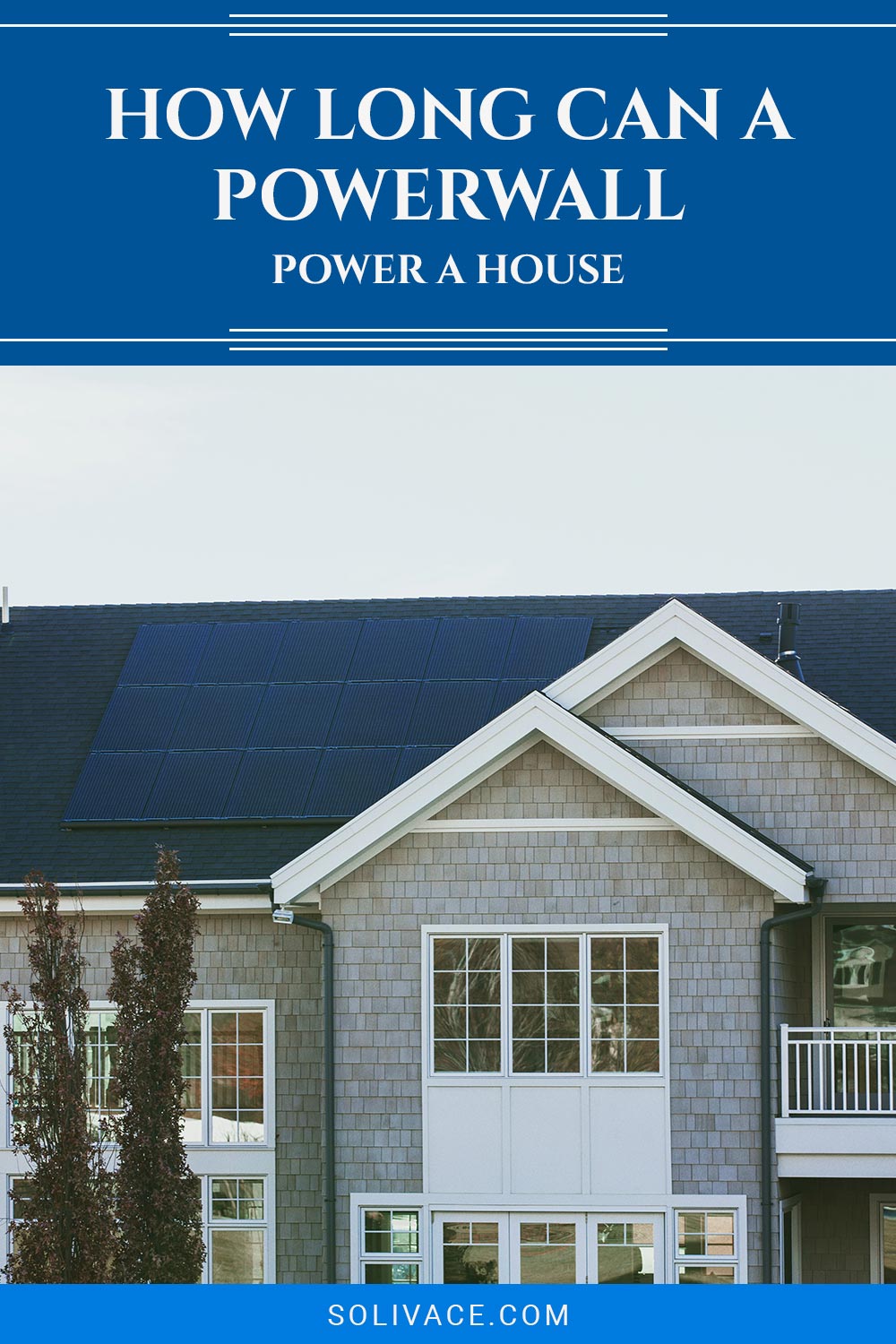How Long Can A Powerwall Power A House
We may earn commissions for purchases made through links on our site. Learn more on our about us page.
Home batteries and off-grid power solutions have come a long way over recent years, and Tesla is just one of the companies pioneering changes in how we think about power.
A Tesla Powerwall 2 has a usable capacity of 13.5kWh which can power the average American household for anywhere between 10 and 15 hours on a single charge. Still, it depends largely on how much electricity you consume when no other power sources exist.
Keep reading to learn more about the storage capacity of a Powerwall 2 and how you can save money by installing one in your own home.

How Much Powerwalls Does It Take Back Up the Whole House?
The answer to this question is mostly subjective since it depends on many factors, including:
- The size of your home
- Your typical energy consumption
- Where your house is located and the climate of that location
For some, a single Powerwall 2 can be enough to back up the whole house, at least for a few hours.
However, Tesla strongly recommends installing at least two batteries in every system for an off-grid or backup experience that is more consistent with regular power conditions.
Some solar and battery professionals go even further and recommend that people with a house larger than 2600 square feet of space have three Tesla Powerwall 2s to ensure the whole house can be properly backed up with no issues or restraints.
How Much Money Can You Save on it?
The purpose of a Powerwall 2 installation is often to save money and be less dependent on national power grids. In general, three ways have been identified that a Powerwall 2 can save you money:
- Using a Powerwall 2’s charge during peak usage times
- Selling power back to the grid
- Complete independence from an electric grid
The U.S. Energy Information Administration (EIA) claims that the average American household uses 11,000kWh of energy per year.
By using a Powerwall 2 to supplement your energy needs during peak time-of-use periods (overnight and during winter), you can save approximately $0.10 per kWh. This comes out to be about $1,100 in savings annually.
Assuming you paid for a single Powerwall 2 installation at $15,000, the unit would pay for itself in about 13.5 years. Luckily, this isn’t the only way to save money.
You can save even more money or potentially make money by selling excess power generated by a connected solar system back to the grid. Complete independence from an electric utility company would zero out a monthly bill and save money as well.
What are the Potential Malfunctions on a Powerwall?
Like any other product, Tesla’s Powerwall 2 units are not completely flawless. Thankfully, malfunctions that reduce a Powerwall 2’s charge capacity below 70 percent in the first ten years after installation are covered by Tesla’s warranty.
The most commonly reported malfunction of a Powerwall 2 unit is related to the firmware within the battery itself and how it can be monitored with Tesla’s app.
What happens is that a Powerwall 2 reaches a certain charge level (not necessarily full) and then refuses to charge or discharge any further, even when switched from backup-only mode.
Contacting Tesla’s support team is usually the only way to safely diagnose the problem, but common solutions include shutting off the unit for at least 10 minutes or rolling back the firmware with the help of technical support.
Another common issue that is actually a feature is that Powerwall 2s will protect itself and the system it is connected to by turning off or going dormant during a spike in grid voltage. This should resolve itself when the system deems it safe to resume work.
Does a Powerwall Have Good Quality?
Many Tesla products are considered to be good quality, including the Powerwall 2 home batteries. Tesla is confident enough in the quality of its products that Powerwall 2 units even come with a 10-year warranty.
Some people may be quick to judge products labeled as “Made in China” as cheap and low-quality goods, but this isn’t always the case.
Tesla has multiple manufacturing locations, most of which are in the U.S., but their international locations in China and Germany are held to the high standards as the rest of the factories.
Is it Worth Buying?
Most people find that installing a Powerwall 2 and solar system is well worth the money, especially compared to other home battery solutions on the market, but you still need to consider your unique energy needs.
When used correctly, the Powerwall 2 can pay for itself within the 10-year warranty period and go on to last another 10 to 15 years, which makes it worthwhile, in many people’s opinion. Just don’t expect to make hundreds of dollars in energy savings immediately.
Final Thoughts on How Long Can A Powerwall Power A House
How long home battery solutions like Tesla’s Powerwall 2 can power a house depends on a lot of factors like average energy consumption or how many batteries are connected to the system.
In general, you can expect a Powerwall to last between 10 to 15 hours when using just the essential home appliances like a refrigerator and some lights.
However, drawing more power by using items like air conditioning units or televisions can reduce the time to as low as 4 to 6 hours.



Leave a Reply
You must be logged in to post a comment.